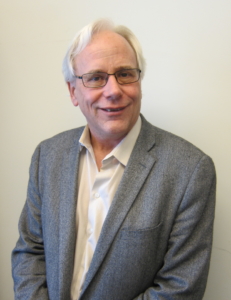Harnessing the power of biostatistics, Keck School of Medicine of USC epidemiologist helps EPA make decisions that reduce risk
By Jeremy Deutchman
At all levels of government, the most seasoned legislators know that vibrant communities depend upon sound public policy – and that at the heart of effective policy is meaningful and reliable data. Gathering, synthesizing and analyzing that data has been the life’s work of biostatistician and epidemiologist Daniel Stram, PhD, catapulting him to the pinnacle of professional achievement in the field of health physics.
This month, Stram, a professor of population and public health sciences at the Keck School of Medicine of USC, was selected as a charter member of the Science Advisory Board (SAB), a key committee of the U.S. Environmental Protection Agency (EPA). Comprised of a diverse group of highly regarded scientists from around the country, the SAB – established in 1978 at Congress’ behest – provides critical advice to help advance the EPA’s vital mission.
“It’s an honor to have been chosen for this committee and to join the ranks of distinguished colleagues doing fantastic work across disciplines,” Stram says. “I’m thrilled to have the chance to make a contribution that can ultimately enhance people’s safety and welfare.”
Stram already has a track record of success on the SAB; he served previously from 2011-2017 and until earlier this year was working as an ad hoc member of the SAB’s review of revisions to the MARSSIM (Multi-Agency Radiation Survey and Site Investigation Manual), which is designed to provide recommendations for radiological clean-up activities. With this most recent appointment, he will be leading the EPA’s review of revisions to the MARSSIM document.
“Determining whether a piece of radiation-contaminated property can be cleared for use is essential to maintaining public health,” Stram notes. “Through our review of MARSSIM, we’ll be providing advice on empirical approaches to measuring residual radiation, as well as methods for designing studies with the statistical power to demonstrate the validity of those approaches.”
Over the course of more than three decades at USC, Stram has blazed a trail of excellence in pioneering epidemiological studies related to dosimetry – measuring, calculating and assessing radiation doses absorbed by the human body. His research has been instrumental to the Multiethnic Cohort Study, established in 1993 by USC and the University of Hawaii to investigate patterns of cancer incidence in Caucasian, African American, Latinx, Japanese American and Native Hawaiian populations. Stram received prestigious funding from the National Institute for Occupational Safety and Health for his work on lung cancer risk estimation due to radon exposure among Colorado Plateau uranium miners, and he has conducted extensive investigations of health outcomes among atomic bomb survivors in Hiroshima and workers and residents affected by radiation exposure as a result of plutonium production in the Southern Urals region of Russia.
“Epidemiological studies are the primary source of radiation risk protection rules. One of the big issues in the field is whether exposure to a chronic dose is equivalent to an instantaneous dose. My research examines ways to maintain people’s safety by keeping their risks very small,” he says.
Stram is also known for his innovation in the area of genome-wide association scans – getting to the root of the genetic causes of disease using bioinformatics and data handling methods necessary to prepare data for statistical analysis. His book Design, Analysis and Interpretation of Genome-Wide Association Scans offers crucial insight to statisticians and epidemiologists on designing and interpreting robust genome-wide studies based on current technology.
“I’ll be teaching a course on genome-wide association scans in the spring, which I’m quite looking forward to,” Stram says. “I’m fortunate because the Keck School enables me to produce timely research and to help shape the next generation of scientists in my field. It’s a great place to have lasting impact.”
